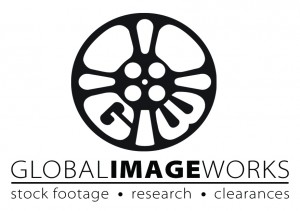Yes, licensing footage is different from licensing photographs. But the differences should not overwhelm or prevent you from using footage in your next production. Our goal is to provide you with useful and practical information about footage licensing so you can dive into the footage pool with complete confidence.
What’s the best way to find footage? No, please don’t say “on YouTube”. While YouTube is a wonderful repository for all sorts of audio-visual works, it can also be a researcher and footage library’s worse nightmare. A lot of the footage you find on YouTube is shall we say, separated by six degrees from its rightful owner. Thus, when you need to secure permission and/or getting an edit master, the YouTube video you downloaded into your edit system may be useless. When you should be finishing your program, you’ll just be starting the research process. Who owns this? How can I get an HD copy?
It’s in your long-term best interest to source the footage you want to use directly from the footage’s authorized representative. Today, all of the footage libraries have an on-line presence. Long gone, but fondly remembered, are the days when you physically had to go to the library and browse through their card catalogues. These days you can even search multiple libraries at one time via search engines such as: www.pacasearch.com , www.footage.net or www.stockfootageonline.com
There are numerous advantages to getting your footage from its rightful owner. The most obvious of which is you know with whom you need to do your licensing deal. The other big advantage is the visual time code on the screening material – the preview copy you’ll be using in your rough cut – actually relates back to the master tape. So, when it’s time to order your edit master, all you need to do is give the archive the in and out numbers. With this information, the archive can quickly create your master. If you’re working with material that does not have proper time code, creating your master is considerably more time consuming. The man-hours it take to eye-match and extract half a dozen, five seconds clips, from a full half hours’ worth of footage will likely be reflected in the cost of your edit master.
Another big advantage of working directly with the footage houses is that only a small percentage of most archives’ holdings are digitized and posted on line. By working directly with the archive, in-house research is often free of charge, you may end up finding a truly unique piece of footage or even discovering some footage you didn’t even know you wanted.
 CATHY CARAPELLA has been working in the field of music and media licensing since the early 1980’s. She began her career as the producer of the syndicated television program “Today in Music History”. In 1990 Cathy opened the New York office of Diamond Time, Ltd., a full-service rights clearance company. For the next 20 years, Cathy cleared or supervised the clearance of several hundred licensing and rights clearance projects and trained dozens of clearance professionals. Cathy is currently the VP of Global ImageWorks, an independent stock footage library with an active Film Research & Rights Clearance department (www.globalimageworks.com).
CATHY CARAPELLA has been working in the field of music and media licensing since the early 1980’s. She began her career as the producer of the syndicated television program “Today in Music History”. In 1990 Cathy opened the New York office of Diamond Time, Ltd., a full-service rights clearance company. For the next 20 years, Cathy cleared or supervised the clearance of several hundred licensing and rights clearance projects and trained dozens of clearance professionals. Cathy is currently the VP of Global ImageWorks, an independent stock footage library with an active Film Research & Rights Clearance department (www.globalimageworks.com).

